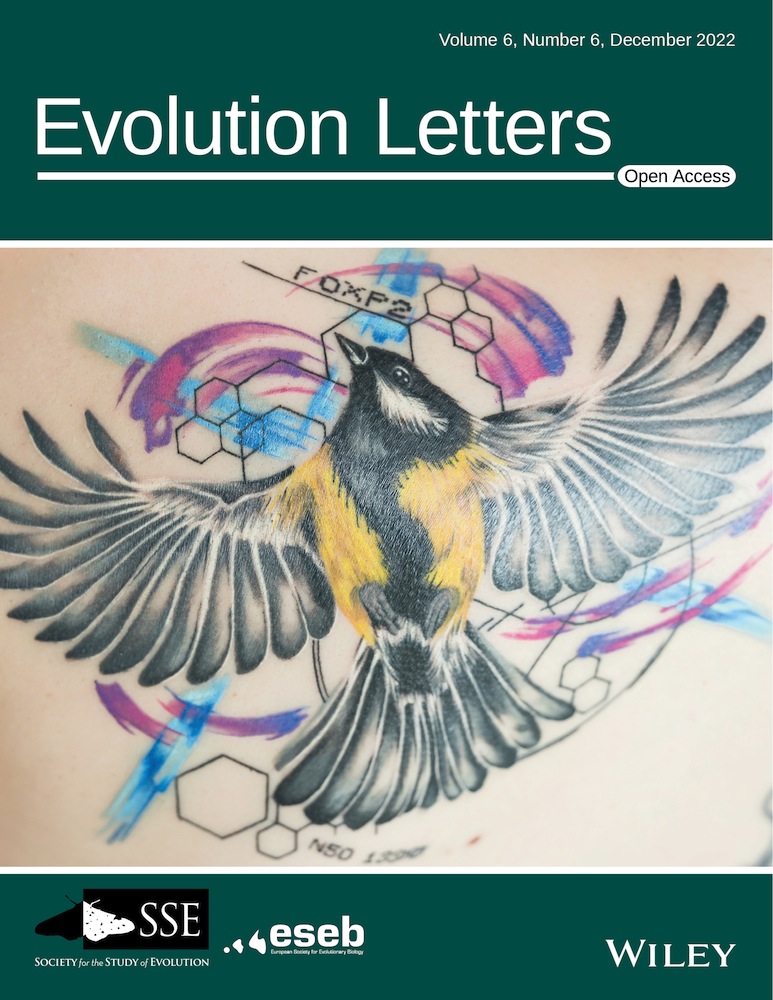The genomics of adaptation to climate in European great tit (Parus major) populations
IF 3.7
1区 生物学
Q2 EVOLUTIONARY BIOLOGY
引用次数: 0
Abstract
Abstract The recognition that climate change is occurring at an unprecedented rate means that there is increased urgency in understanding how organisms can adapt to a changing environment. Wild great tit (Parus major) populations represent an attractive ecological model system to understand the genomics of climate adaptation. They are widely distributed across Eurasia and they have been documented to respond to climate change. We performed a Bayesian genome-environment analysis, by combining local climate data with single nucleotide polymorphisms genotype data from 20 European populations (broadly spanning the species’ continental range). We found 36 genes putatively linked to adaptation to climate. Following an enrichment analysis of biological process Gene Ontology (GO) terms, we identified over-represented terms and pathways among the candidate genes. Because many different genes and GO terms are associated with climate variables, it seems likely that climate adaptation is polygenic and genetically complex. Our findings also suggest that geographical climate adaptation has been occurring since great tits left their Southern European refugia at the end of the last ice age. Finally, we show that substantial climate-associated genetic variation remains, which will be essential for adaptation to future changes.欧洲大山雀(Parus major)种群适应气候的基因组学研究
认识到气候变化正在以前所未有的速度发生,意味着了解生物如何适应不断变化的环境变得越来越紧迫。野生大山雀(Parus major)种群为了解气候适应基因组学提供了一个有吸引力的生态模型系统。它们广泛分布在欧亚大陆,并被记录下来以应对气候变化。通过将当地气候数据与来自20个欧洲种群(广泛跨越该物种的大陆范围)的单核苷酸多态性基因型数据相结合,我们进行了贝叶斯基因组环境分析。我们发现36个基因被认为与适应气候有关。在对生物过程基因本体(GO)术语进行富集分析后,我们确定了候选基因中过度代表的术语和途径。由于许多不同的基因和氧化石墨烯术语与气候变量相关,因此气候适应似乎是多基因和遗传复杂的。我们的研究结果还表明,自从大山雀在最后一个冰河时代结束时离开南欧避难所以来,地理气候适应一直在发生。最后,我们表明大量与气候相关的遗传变异仍然存在,这对于适应未来的变化至关重要。
本文章由计算机程序翻译,如有差异,请以英文原文为准。
求助全文
约1分钟内获得全文
求助全文
来源期刊

Evolution Letters
EVOLUTIONARY BIOLOGY-
CiteScore
13.00
自引率
2.00%
发文量
35
审稿时长
10 weeks
期刊介绍:
Evolution Letters publishes cutting-edge new research in all areas of Evolutionary Biology.
Available exclusively online, and entirely open access, Evolution Letters consists of Letters - original pieces of research which form the bulk of papers - and Comments and Opinion - a forum for highlighting timely new research ideas for the evolutionary community.
 求助内容:
求助内容: 应助结果提醒方式:
应助结果提醒方式:


